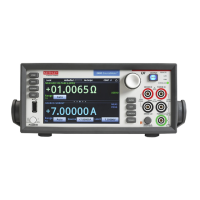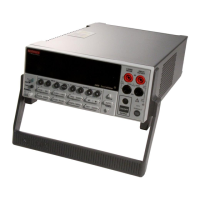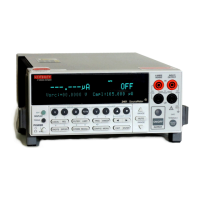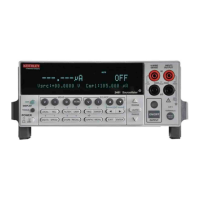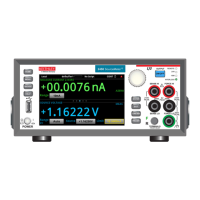Interactive SourceMeter® Instrument Reference Manual Section 6:
2461-901-01 A/November 2015 6-165
Details
If this is set to on, when the reading buffer is cleared (0 % filled) or full (100 % filled), an event is
logged in the event log. If this is set to off, reading buffer status is not reported in the event log.
Example
Query the log state of defbuffer1.
Output:
1
Indicates that the log state is on.
Also see
Reading buffers (on page 3-2)
Remote buffer operation (on page 3-23)
:TRACe:MAKE (on page 6-165)
Using the event log (on page 2-142)
:TRACe:MAKE
This command creates a user-defined reading buffer.
Type Affected by Where saved Default value
Command only
Recall settings
Instrument reset
Save settings Not applicable
Usage
:TRACe:MAKE "<bufferName>", <bufferSize>
:TRACe:MAKE "<bufferName>", <bufferSize>, <bufferStyle>
A user-supplied string that indicates the name of the buffer
A number that indicates the maximum number of readings that can be stored in
<bufferName>
; minimum is 10
The type of reading buffer to create:
• Store readings with reduced accuracy (6.5 digits) with no formatting
information, 1 μs accurate timestamp, maximum 27,500,000 readings:
COMPact
• Store readings with full accuracy with formatting, maximum 6,875,000
readings: STANdard (default)
• Store the same information as standard, plus additional information: FULL
• Store external reading buffer data: WRITable
•
Store external reading buffer data with two reading values: FULLWRITable
Details
You cannot assign user-defined reading buffers the name defbuffer1 or defbuffer2.
If you create a reading buffer that has the same name as an existing user-defined buffer, an event
message 1115, "Parameter error: TRACe:MAKE cannot take an existing reading buffer name" is
generated.
When you create a reading buffer, it becomes the active buffer. If you create two reading buffers, the
last one you create becomes the active buffer.
The default fill mode of a user-defined buffer is once. You can change it to continuous.

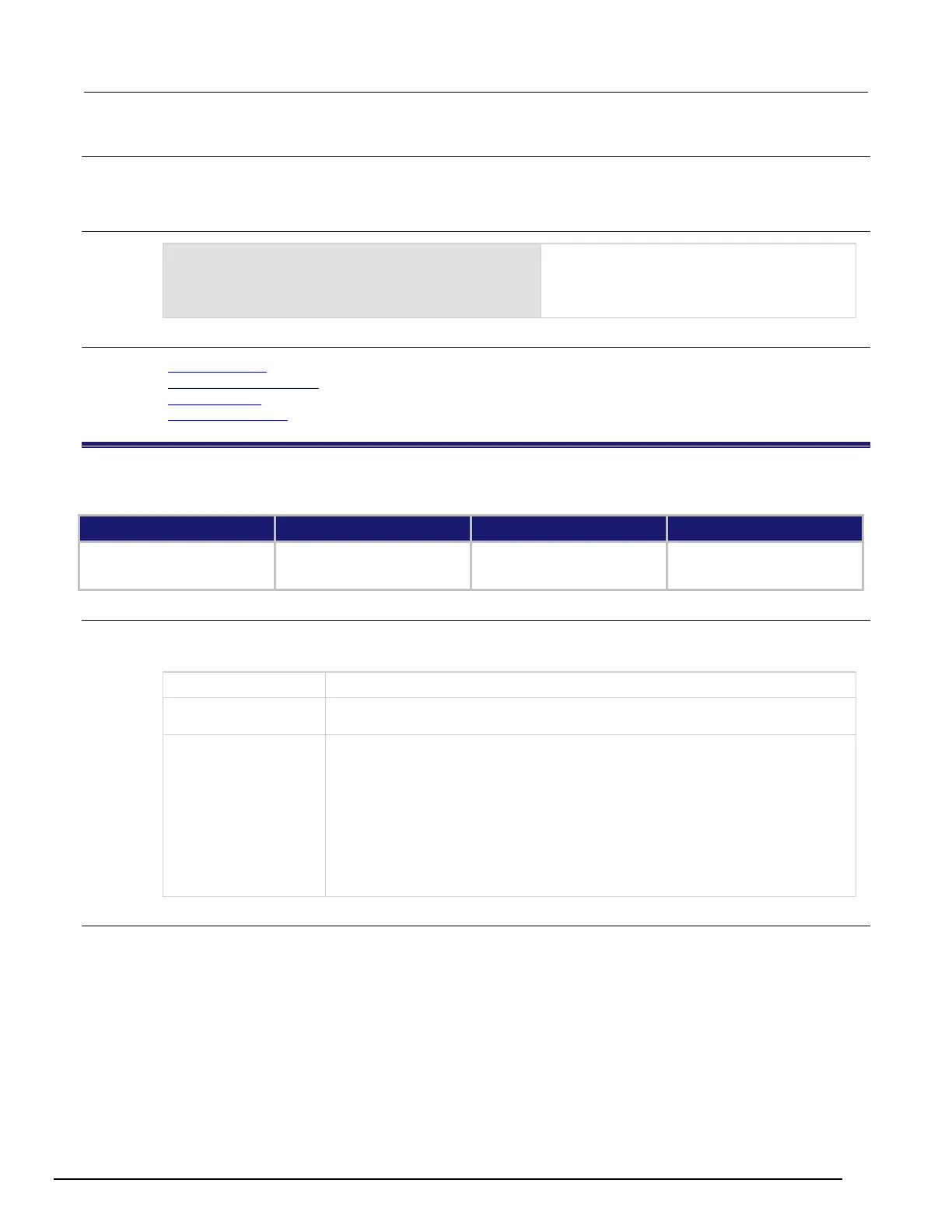